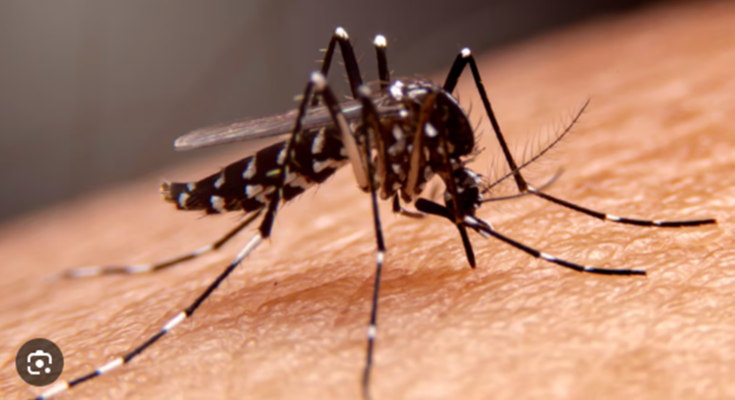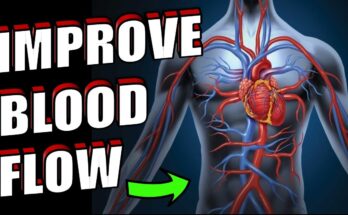Malaria Symptoms: Malaria remains one of the most significant global health challenges, affecting millions of people each year.
This disease is not only prevalent but also deadly, particularly in tropical and subtropical regions where the climate supports the life cycle of the parasite-carrying mosquitoes.
Understanding the symptoms and causes of malaria is crucial for prevention, timely diagnosis, and effective treatment.
Understanding Malaria
Malaria is a life-threatening disease caused by parasites transmitted to humans through the bites of infected female Anopheles mosquitoes. Despite significant advances in disease control, malaria continues to be a major health challenge in tropical and subtropical regions around the world.
Global Impact of Malaria
Malaria significantly impacts global health, particularly in the Sub-Saharan Africa, Southeast Asia, and South America. The disease’s prevalence in these warm and humid climates is mainly due to the favorable conditions for mosquito breeding and survival.
Key Statistics:
- Annual Cases: According to the World Health Organization (WHO), there were approximately 241 million cases of malaria worldwide in 2020.
- Deaths: The disease was responsible for an estimated 627,000 deaths in the same year, mostly among children under five years of age in Africa.
- Economic Burden: Malaria poses a substantial economic burden in endemic countries, often hindering economic development and prosperity. The direct costs (treatment, health care) and indirect costs (loss of productivity, absenteeism) of malaria are estimated to be billions of dollars annually.
Trends and Progress
The global fight against malaria has seen various successes due to concerted international efforts:
- Reduction in Mortality Rates: Since 2000, the global malaria death rate has fallen by over 40%, thanks to improved disease surveillance, vector control strategies, and better healthcare facilities.
- Increased Funding: International funding for malaria control and elimination reached about USD 3 billion in 2020, reflecting an increase in global commitment.
- Innovations in Prevention and Treatment: Innovations such as gene drive technology, new antimalarial drugs, and the development and deployment of the first-ever malaria vaccine (RTS,S/AS01) are promising advances towards eradicating this disease.
Challenges Ahead
Despite progress, challenges remain, including:
- Drug Resistance: The emergence of drug-resistant malaria strains is complicating efforts to control the disease.
- Insecticide Resistance: Similar to drug resistance, mosquitoes are becoming resistant to common insecticides used in nets and sprays, reducing the effectiveness of one of the most common prevention methods.
- Climate Change: Changes in climate patterns can potentially expand the geographical range of malaria-carrying mosquitoes, thereby increasing the risk of malaria to new regions and populations.
However, while significant progress has been made, sustained efforts are necessary to overcome the emerging challenges and strive towards a malaria-free world.
Causes of Malaria
Understanding the causes and transmission dynamics of malaria is crucial for its prevention and control. Here we will explore the primary cause of malaria and the various environmental and social factors that influence its transmission.
Transmission through Anopheles Mosquitoes
The principal cause of malaria is the transmission of Plasmodium parasites through the bite of an infected Anopheles mosquito. Only Anopheles mosquitoes can transmit malaria, and they must have been infected through a previous blood meal taken from an infected person. When a mosquito bites an infected person, a small amount of blood is taken that contains microscopic malaria parasites. About 1-2 weeks later, when the mosquito takes its next blood meal, these parasites mix with the mosquito’s saliva and are injected into the person being bitten.
There are several species of Anopheles mosquitoes, and each species has a different preferred feeding behavior and breeding habitat, which significantly influences malaria transmission.
Environmental and Social Factors Influencing Malaria Transmission
Several environmental and social factors can affect the transmission of malaria:
- Climate Conditions: Warm and humid climates promote the breeding of mosquitoes. The Plasmodium parasites require a minimum ambient temperature to develop in the mosquito, making malaria more common in tropical and subtropical areas.
- Rainfall Patterns: Excessive rain can wash away mosquito larvae from breeding sites, but regular patterns of rainfall provide ideal conditions for larva development. Pools of standing water, which can form after rains, provide perfect breeding grounds for mosquitoes.
- Access to Healthcare: Regions with limited access to healthcare services often see higher incidences of malaria, as treatment and preventive measures are less accessible.
- Housing and Urbanization: Living conditions such as poorly constructed housing without effective screens or air conditioning allow mosquitoes easy access to humans. Urbanization can also lead to increased breeding sites for mosquitoes if there are numerous stagnant water bodies and poor waste management.
- Socio-economic Factors: Communities with lower socio-economic status are often more vulnerable to malaria, as they might lack the resources for protective measures like mosquito nets, insecticides, or proper healthcare.
However, effective malaria control involves a combination of strategies, including vector control, access to diagnostic testing and treatment, and educational campaigns to raise awareness about the risk factors and preventive measures.
Symptoms of Malaria
Recognizing the early signs and understanding how symptoms can escalate in severe cases is crucial for timely diagnosis and treatment.
Early Symptoms and Signs of Malaria
The initial symptoms of malaria typically develop within 10 days to 4 weeks following the infection, although they can appear as early as 7 days or as late as one year after the mosquito bite. These early symptoms often mimic those of a flu and can include:
- Fever and Chills: Sudden, high fevers with shaking chills are classic malaria symptoms.
- Headache and Dizziness: These are common and can be severe, making it difficult to perform daily activities.
- Sweating: Excessive sweating, especially as fevers subside, is typical.
- Nausea and Vomiting: Early signs might include gastrointestinal distress, leading to vomiting and a loss of appetite.
- Muscle Pains and Fatigue: Generalized body aches and a profound sense of tiredness are frequently reported by patients.
- Diarrhea: While less common, some individuals may experience diarrhea.
These symptoms are often nonspecific and can be mistaken for those of other viral illnesses. Hence, travel history to regions where malaria is endemic is a critical clue in the diagnosis.
Symptoms in Severe Cases of Malaria
If untreated, malaria can progress to more severe forms, particularly in cases caused by the parasite Plasmodium falciparum. Severe malaria is a medical emergency that requires immediate treatment, and the symptoms can be life-threatening:
- Severe Anemia: Caused by the destruction of red blood cells, leading to fatigue and weakness.
- Respiratory Problems: Including difficulty breathing and coughing.
- Cerebral Malaria: This is one of the most dangerous complications, characterized by seizures, confusion, coma, and neurological damage.
- Acute Kidney Failure: Decreased urine output and other renal issues may occur, complicating the clinical picture.
- Hypoglycemia: Low blood sugar levels, which can cause seizures and unconsciousness, especially in pregnant women and young children.
- Metabolic Acidosis: This condition involves the buildup of acids in the body, which can lead to rapid breathing and confusion.
However, early detection and treatment of malaria can prevent these severe complications, highlighting the importance of seeking medical advice if any symptoms of malaria are noticed after visiting an area where the disease is common.
Stages of Malaria Symptoms
Understanding these stages can help in the timely diagnosis and treatment of the disease, potentially saving lives. Here’s a breakdown of the stages of malaria symptoms:
1. Incubation Period
The incubation period is the initial stage of malaria and refers to the time between the mosquito bite that transmits the malaria parasites and the onset of symptoms. This period varies depending on the type of parasite involved. For Plasmodium falciparum, the most dangerous and common malaria parasite, the incubation period typically ranges from 7 to 30 days. However, in some cases, the parasites can remain dormant in the body for up to a year.
2. Acute Phase
After the incubation period, the acute phase begins, characterized by the appearance of symptoms. These symptoms often mimic those of the flu and can include fever, headache, chills, and vomiting. At this stage, malaria symptoms are usually cyclic, with intense chills followed by a fever and then sweating. These cycles typically last 6-10 hours and occur every two to three days, depending on the malaria parasite species causing the infection.
3. Possible Progression to Severe Malaria
If left untreated, malaria can progress from the acute phase to severe malaria. This is a critical condition that can lead to serious health complications or even death. Severe malaria is characterized by more serious symptoms such as severe anemia, respiratory distress, cerebral malaria (which affects the brain), and organ failure. The risk of severe complications increases if the initial symptoms are not treated promptly and effectively.
However, understanding the stages of malaria symptoms is crucial for early detection and effective treatment. Awareness and quick response to the initial symptoms can significantly improve the outcomes of those infected.
Complications and Risks of Severe Malaria
Understanding these complications is crucial for prevention and management, especially for populations at increased risk such as children and pregnant women.
Severe Malaria Complications
- Cerebral Malaria: This is one of the most dangerous complications of severe malaria. Cerebral malaria occurs when infected blood cells block small blood vessels to your brain, leading to swelling, brain damage, and potentially coma or death. Symptoms often include confusion, seizures, and loss of consciousness.
- Respiratory Distress: In severe cases, malaria can cause acute respiratory distress syndrome (ARDS), where fluid builds up in the lungs, making breathing extremely difficult. This complication is particularly dangerous and requires immediate medical attention.
- Organ Failure: Malaria can affect the kidneys, liver, and spleen, leading to their failure. This occurs due to the high levels of toxins and the breakdown of red blood cells caused by the malaria infection. Organ failure can result in long-term health problems or can be fatal if not treated quickly.
Populations at Increased Risk
- Children: Young children, especially those under five years old, are at a higher risk of severe malaria. Their immune systems are not fully developed, which makes it harder for them to fight off the disease. Severe malaria in children often manifests rapidly and can be fatal within hours if not treated.
- Pregnant Women: Malaria is a significant risk for pregnant women and their unborn babies. It can cause miscarriage, premature delivery, low birth weight, and stillbirth. Pregnant women are more susceptible due to changes in their immune system and body that make it harder to cope with malaria.
However, preventive measures, such as using insecticide-treated mosquito nets, indoor spraying with insecticides, and taking antimalarial medications, are critical, especially for those most at risk.
Preventing and Managing Malaria Symptoms
Effective prevention and management of malaria symptoms are crucial to reducing its impact. Below, we explore comprehensive strategies to prevent malaria and the best treatment options available.
Preventive Measures for Malaria
Preventing malaria involves a combination of strategies tailored to the individual and the environment. Here are the most effective preventive measures:
- Use of Insect Repellent: Apply insect repellent that contains DEET, picaridin, or oil of lemon eucalyptus on exposed skin and clothing to deter mosquitoes.
- Mosquito Nets: Sleep under long-lasting insecticidal nets (LLINs) to protect against mosquito bites during the night.
- Anti-Malarial Medication: Prior to traveling to malaria-prone areas, consult a healthcare provider for prophylactic (preventive) medication tailored to the specific region’s malaria strains.
- Indoor Residual Spraying (IRS): This involves the application of insecticide to the interior walls of residences. It is a highly effective way to reduce the malaria-carrying mosquito population.
- Wearing Protective Clothing: Wear long sleeves, trousers, and socks when outdoors during peak mosquito biting times, typically dusk to dawn.
- Environmental Management: Eliminate standing water where mosquitoes breed. Ensure proper disposal of items that can collect rainwater, and regularly clean gutters.
- Education and Awareness: Community education on malaria transmission and prevention methods is vital, especially in high-risk areas.
Treatment Options for Malaria
Prompt and effective treatment is critical for managing malaria symptoms and preventing complications. Here are the key treatment options:
- Artemisinin-based Combination Therapies (ACTs): ACTs are the standard treatment for Plasmodium falciparum malaria and are recommended by the World Health Organization (WHO). These medications combine two or more drugs with different mechanisms of action.
- Chloroquine Phosphate: Used for the treatment of Plasmodium vivax malaria, chloroquine remains an effective choice in areas where the parasite has not developed resistance.
- Supportive Care: Management of symptoms such as fever, dehydration, and anemia is crucial. This may include the use of antipyretics for fever, adequate fluid intake for dehydration, and blood transfusions for severe anemia.
- Follow-up and Monitoring: After initial treatment, follow-up is essential to ensure the infection is cleared and to manage any potential side effects of the medication.
- Combination Therapies for Resistance: In areas where resistance to standard treatments is prevalent, combination therapies that include other effective drugs can be used under medical guidance.
- Rapid Diagnostic Testing (RDT): Quick identification of the malaria strain helps in administering the correct treatment promptly, which is essential for effective disease management.
By incorporating these preventive measures and adhering to recommended treatment protocols, the risks associated with malaria can be significantly minimized, improving health outcomes in affected regions.
FAQs about Malaria Symptoms
What are the common symptoms of malaria?
Malaria symptoms can vary but typically include fever, headache, chills, and vomiting. These symptoms usually appear 10-15 days after being bitten by an infected mosquito. Severe cases may involve anemia, muscle pain, seizures, and confusion.
How quickly do malaria symptoms appear?
Symptoms can appear between 7 and 30 days after the mosquito bite. However, depending on the type of parasite involved, symptoms might not manifest for several months or even longer if preventive medications were taken.
Can malaria symptoms be mild?
Yes, malaria symptoms can range from very mild to severe. In some cases, symptoms might be so mild that they’re mistaken for a flu or cold. Always consult a healthcare provider if you suspect malaria, especially after travel to endemic areas.
Do malaria symptoms differ in children?
Yes, children may experience more severe symptoms such as rapid breathing, severe anemia, and frequent convulsions. Infants and young children are also at a higher risk of developing complicated malaria quickly.
Is fever always a symptom of malaria?
While fever is a common symptom of malaria, it’s not always present. Some patients may experience malaria without a significant fever. Always consider other symptoms and recent travel history.
Can the symptoms of malaria recur?
Yes, without proper treatment, malaria symptoms can recur. Some malaria parasites can remain dormant in the body and reactivate at a later time, causing the symptoms to return.
When should I seek medical attention for malaria symptoms?
Seek immediate medical attention if you experience symptoms of malaria, especially after traveling to a region where malaria is prevalent. Early diagnosis and treatment are crucial to prevent complications.
Conclusion
In summary, recognizing the symptoms of malaria is crucial for early diagnosis and effective treatment. Symptoms such as fever, chills, and headaches can often mimic less severe illnesses, making it vital to stay informed and vigilant. Raising awareness about malaria and its impact on communities is essential in preventing the spread of this life-threatening disease.
We encourage everyone to engage in preventive measures such as using insecticide-treated mosquito nets, taking antimalarial medications when recommended, and supporting efforts to reduce mosquito breeding sites. By staying informed and proactive, we can collectively work towards reducing the incidence of malaria and saving lives. Join the fight against malaria today by spreading the word and taking preventive actions in your community.
References
For those seeking to expand their understanding of malaria symptoms and to verify the information discussed, here are several reputable sources that offer detailed insights and up-to-date research:
- World Health Organization (WHO) – The WHO provides comprehensive guidelines and research on malaria, including symptoms, prevention, and treatment strategies. Read more about malaria on the WHO website.
- Centers for Disease Control and Prevention (CDC) – The CDC’s malaria page offers extensive information on malaria symptoms, diagnostic methods, and prevention tips. Explore the CDC’s resources on malaria.
- Malaria Journal – This peer-reviewed journal features studies and reviews from leading researchers in the field, providing deeper insights into the symptoms of malaria and other related topics. Access articles from the Malaria Journal.
- MedlinePlus – A service of the U.S. National Library of Medicine, MedlinePlus offers accessible information on malaria symptoms and treatments, suitable for non-specialists. Visit MedlinePlus for more on malaria.
These resources are invaluable for anyone looking to understand more about malaria, its symptoms, and global impact. They provide reliable, peer-reviewed information that can assist in both educational and medical contexts.



